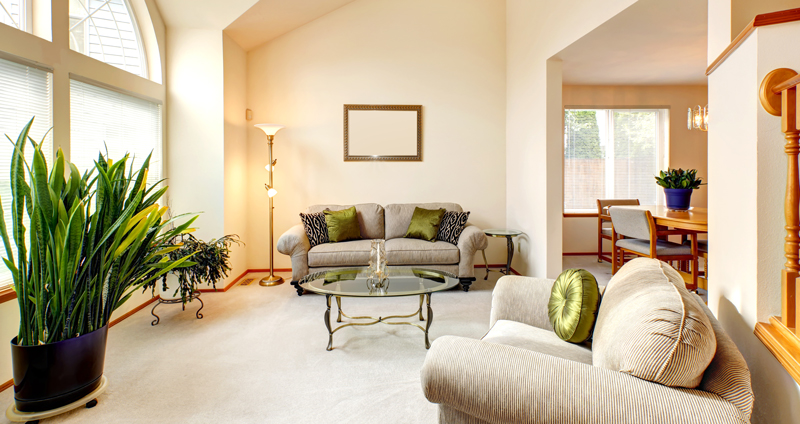Step into a world where every hue, shade, and tint plays a vital role in creating a harmonious and inviting living space. In this article, we will explore the art of creating a cohesive color scheme in your home. From selecting the perfect palette to blending tones seamlessly, we will provide you with expert tips and tricks to transform your living space into a work of art. So, grab your paintbrushes and get ready to unleash your inner designer as we dive into the wonderful world of color coordination.

Establishing a Foundation with Neutrals
One of the key elements in creating a cohesive color scheme in your home is . Neutrals serve as the backbone of your design palette, providing a sense of balance and harmony to the space. By incorporating neutral colors such as whites, creams, beiges, grays, and taupes, you can create a versatile base that allows for easy mixing and matching of other colors and patterns.
When working with neutrals, consider the following tips to help you achieve a cohesive look in your home:
- Layer different shades of neutrals: Experiment with light and dark neutrals to add depth and dimension to your space.
- Incorporate texture: Use different textures such as linen, wool, leather, and wood to add visual interest and warmth to your neutral palette.
- Add pops of color: To prevent your space from looking too monochromatic, introduce pops of color through accents such as throw pillows, rugs, artwork, and decorative accessories.
- Use metallic finishes: Incorporating metallic finishes like gold, silver, or brass can add a touch of luxury and sophistication to your neutral color scheme.
Injecting Personality with Accent Colors
One way to add a touch of personality to your home decor is by incorporating accent colors into your color scheme. Accent colors are a great way to inject visual interest and create a cohesive look throughout your space. By strategically using accent colors, you can tie together different elements in your home and create a harmonious overall design.
When choosing accent colors, it’s important to consider the mood you want to create in each room. For example, warm tones like reds, oranges, and yellows can create a cozy and inviting atmosphere, while cool tones like blues and greens can evoke a sense of calm and tranquility. Mixing and matching different accent colors can help you achieve a unique and personalized look that reflects your tastes and personality.
Incorporating accent colors doesn’t have to mean painting your walls or investing in new furniture. You can easily introduce accent colors through smaller decor items like throw pillows, rugs, curtains, artwork, and accessories. By strategically placing these pops of color throughout your space, you can create a cohesive and visually appealing look that ties your design together. Remember to balance your accent colors with your main color scheme to ensure a harmonious and well-balanced design overall.
| Accent Color | Room |
|---|---|
| Red | Living Room |
| Blue | Bedroom |
| Yellow | Kitchen |
Balancing Warm and Cool Tones
When it comes to creating a cohesive color scheme in your home, it’s important to find the right balance between warm and cool tones. Mixing warm hues like reds, oranges, and yellows with cool tones such as blues, greens, and purples can create a harmonious and inviting space.
One way to achieve this balance is by using a 60-30-10 rule, where 60% of the room is one dominant color (usually a neutral or a warm tone), 30% is a secondary color (typically a complementary or contrasting hue), and 10% is an accent color (a bright or bold shade). This distribution helps to create visual interest while maintaining a cohesive look.
Another tip is to incorporate a variety of textures and finishes in your decor to add depth and dimension to the space. Mixing different materials like wood, metal, glass, and fabric can help to break up the monotony of a single color palette and make the room more visually appealing.
Choosing Complementary Colors for Harmony
When it comes to creating a cohesive color scheme in your home, is key. Complementary colors are pairs of colors that are opposite each other on the color wheel. When used together, they create a dynamic and visually pleasing contrast that can bring balance and harmony to your space.
One way to choose complementary colors for your home is to pick a dominant color and then select its opposite on the color wheel. For example, if you have a room with walls painted in a soft, buttery yellow, consider adding accents in a deep, plum purple to create a striking contrast. This combination can add depth and interest to your space while still maintaining a sense of harmony.
Another approach is to use different shades of the same color family as complementary colors. For instance, pair a light, dusty pink with a richer, coral pink to create a cohesive and harmonious color scheme in a bedroom or living room. By playing with the saturation and intensity of colors within the same family, you can achieve a balanced and visually interesting look.
In conclusion, establishing a cohesive color scheme in your home can truly transform the look and feel of your space. By considering elements such as balance, harmony, and contrast, you can create a space that reflects your personal style and vision. Remember, color is a powerful tool that can evoke emotions and set the tone for every room in your home. So go ahead, unleash your creativity and experiment with different hues to bring your dream home to life. With a cohesive color scheme, you can make a bold statement and create a harmonious atmosphere that you will love coming home to every day.
